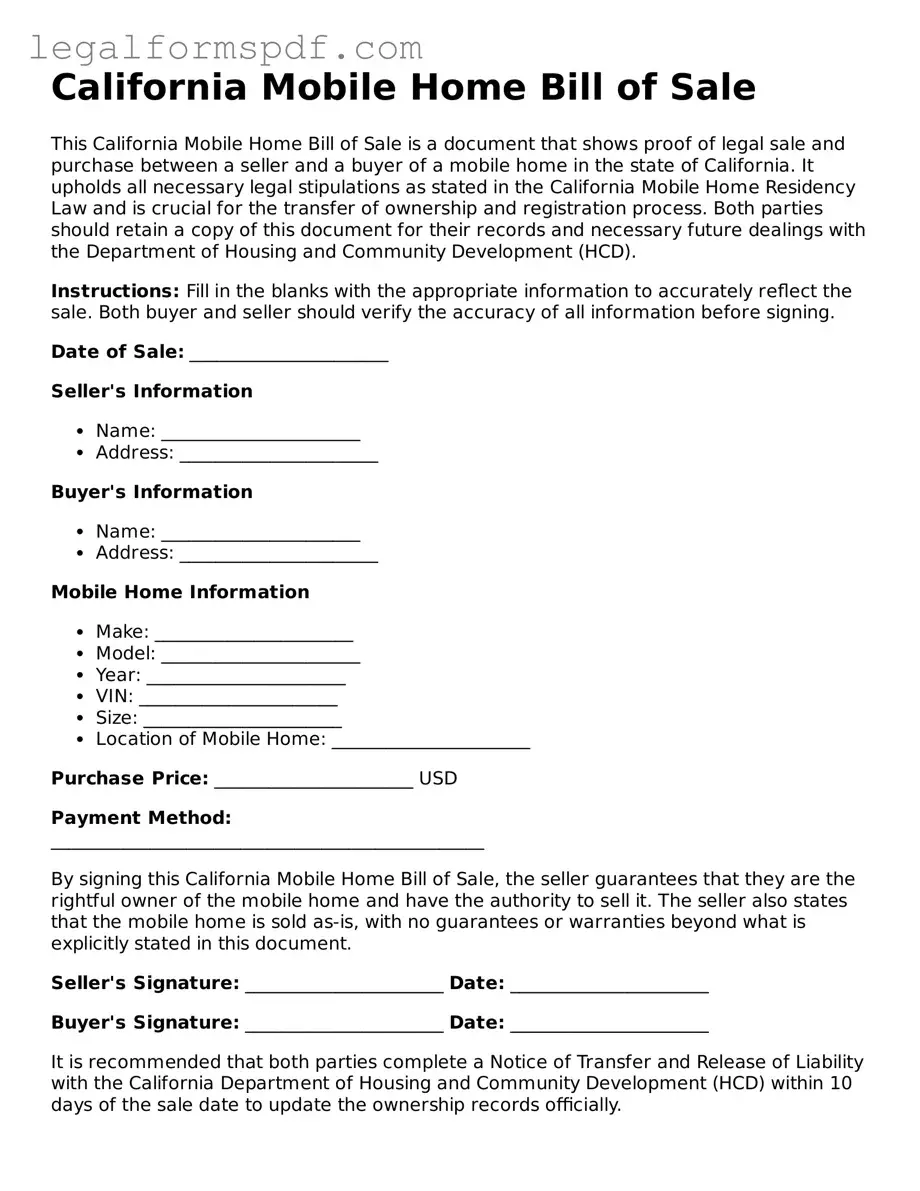When filling out the California Mobile Home Bill of Sale form, people often encounter a range of common mistakes that can delay the process or even invalidate the form. Understanding these errors is crucial for a swift and correct execution of this essential document.
One frequent mistake is not providing detailed information about the mobile home. This includes the make, model, year, and serial number. These details are crucial for identifying the mobile home in question, ensuring that there is no confusion about which property is being sold. Without this information, the bill of sale might not provide enough legal clarity to be effective.
Another common error is forgetting to include the sale price or writing it unclearly. The sale price must be clearly stated in the document to avoid any future disputes or misunderstandings about the transaction's financial aspects. Moreover, including the payment method or terms, when relevant, is vital for a comprehensive agreement.
Often, individuals fail to provide information about the warranty status of the mobile home. Specifying whether the mobile home is being sold "as is" or with a warranty can significantly impact the agreement's terms. This oversight might lead to disagreements about the condition of the mobile home after the sale.
Not properly identifying both the buyer and the seller with full names and addresses is another typical oversight. This complete identification is crucial for the legal enforceability of the document. Both parties' contact information ensures that there's a clear record of who is involved in the transaction.
A surprisingly common mistake is not having the bill of sale signed and dated by all parties. Signatures are what legitimize the document, and without them, the bill of sale might not be legally binding. Additionally, the date of the transaction is important for record-keeping and establishing when the ownership officially changed hands.
Often, sellers neglect to acknowledge the receipt of payment within the document. Confirming that the payment has been received, or stating the arrangement for payment if it has not been fully paid, is essential for clarifying that the transaction has occurred or will occur under agreed terms.
Disregarding local regulations or requirements specific to California can also lead to issues. Each state may have unique stipulations for the sale of mobile homes, including specific disclosures or additional documentation that must be included with the bill of sale.
Finally, a significant mistake is failing to keep a copy of the bill of sale for both the buyer's and seller's records. A copy of this document serves as proof of ownership transfer and can be vitally important for tax purposes or in case any legal questions arise concerning the transaction.
Avoiding these mistakes ensures a smoother, more legally sound process when transferring the ownership of a mobile home. Both buyers and sellers should pay close attention to the details of the bill of sale, ensuring all information is complete and accurate for a successful and trouble-free transaction.
